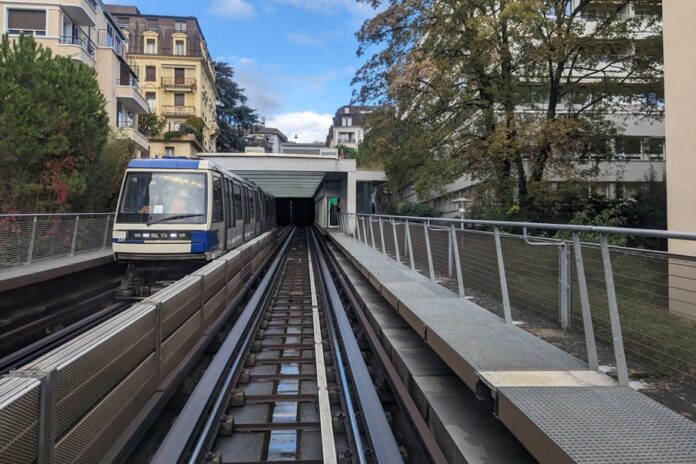(Zurich and Lausanne, Switzerland) It would be easy to fall into admiration, abandon all critical thinking and glorify the Swiss public transport network. But conversely, it would be stupid to ignore your pleasure. So let’s go.
The Swiss public transport system is absolutely fabulous. Final point. It’s Byzantium, as they say around here.
It starts with efficiency. In the twenty trips made in four days, the wait has never exceeded 10 minutes. For what ? Because there are so many options that when you find yourself at a station in a big city – we were in Zurich and Lausanne – there is always a metro, a train, a tram or a bus that allows us to quickly begin the journey.
In this regard, the CFF (Swiss Federal Railways) application is a charm. We enter the starting point, we enter the destination, and four or five options are offered, without regard to the means of transport chosen.
The information is all the more useful because even the all-powerful Google Maps cannot find so many options and, above all, explain them as clearly. Because in the CFF application, all the details are there, including traffic, the location of the wagons according to class and, above all, which platform to go to. A bit of important information in a station like Zurich, where platform numbers go into the 40s.
The trains are clean, the staff members are courteous and multilingual. On a ride to Lausanne, the lady responsible for announcements was particularly impressive, making her announcements in French, Italian, German and English, as if Claude Dubois and Leo Kay were one.
Punctuality seems to be a cardinal value. “By virtue of legendary Swiss punctuality, operators apologize if the train is more than three minutes late,” colleague Emmanuel Favre, from the Sport-Center agency, whispered to us. We’ll have to take his word for it, because never has one of our trains arrived so late.
Last thing: people know how to live. No unbearable hands-free calls, no Karen asking to see the manager (although we are told that Switzerland is not immune to the phenomenon) and, above all, a payment system, based on honor, which is scrupulously respected if we rely on our small sample. The system is honor-based in that access to vehicles and docks is not controlled at a point of entry as in North American transportation. It is when a manager passes through the aisles, and no one has been caught red-handed during our trips.
Okay, now the downsides? Like almost everywhere, trains can be crowded during rush hour. We therefore had to spend the first hour of the journey from Zurich to Lausanne sitting on the stairs leading to the second floor. The guy in front of us put on a brave face and opened his bottle of red wine, probably in the hope of finding comfort there. Even without Merlot, it’s still a better experience than being flattened against the metro window between Rosemont and Berri-UQAM at 8 a.m.
If you have a question, staff are difficult to find at the larger stations. At the very least, the passers-by we stopped were always of great help.
Finally, last drawback, and not the least: the cost. The Swiss Pass gives access to all modes of transport anywhere in the country, and even covers the journey to a neighboring country – the train ride to Lustenau, Austria, in our case. Not for nothing does the SBB present it as the “key to traveling through Switzerland”. But said sesame, for four days, is not cheap for tourists: 280 Swiss francs, for second class, or 425 Canadian dollars. However, the prices are much more reasonable for Swiss citizens.
We console ourselves by saying that we have made the card profitable, with a Zurich-Lustenau return trip, a Zurich-Lausanne return trip, an incalculable number of trips within the cities and, above all, no taxi to take during the stay, even when arriving or going to the airport.















